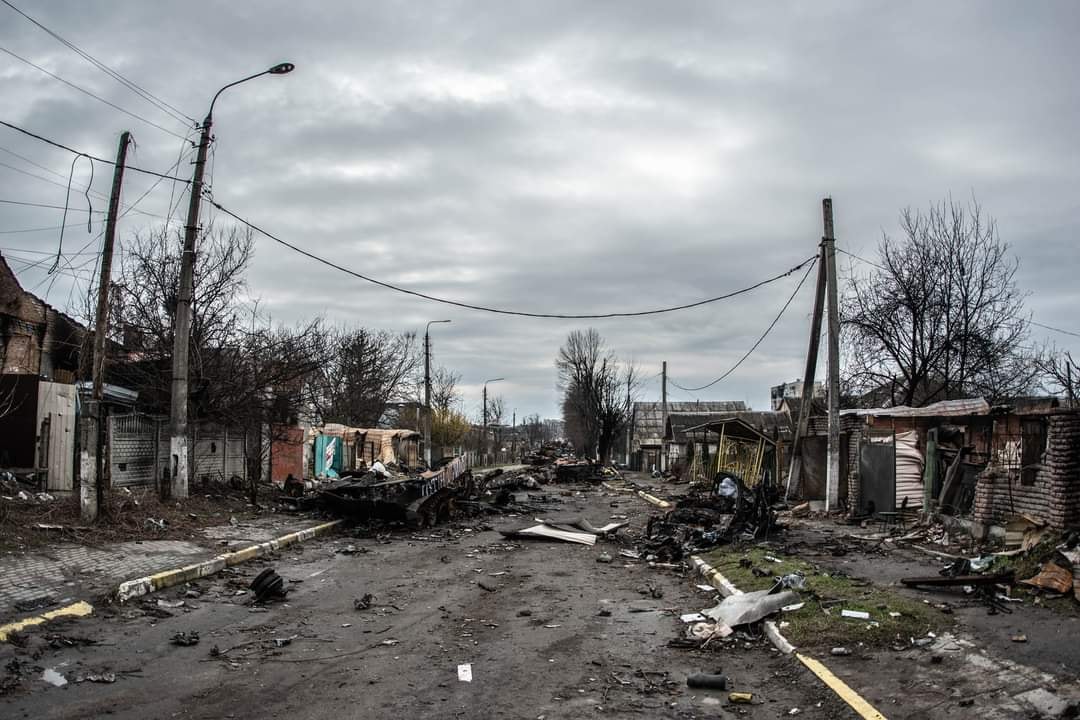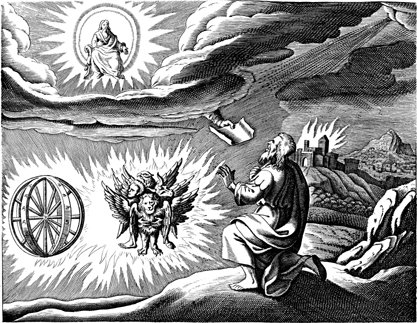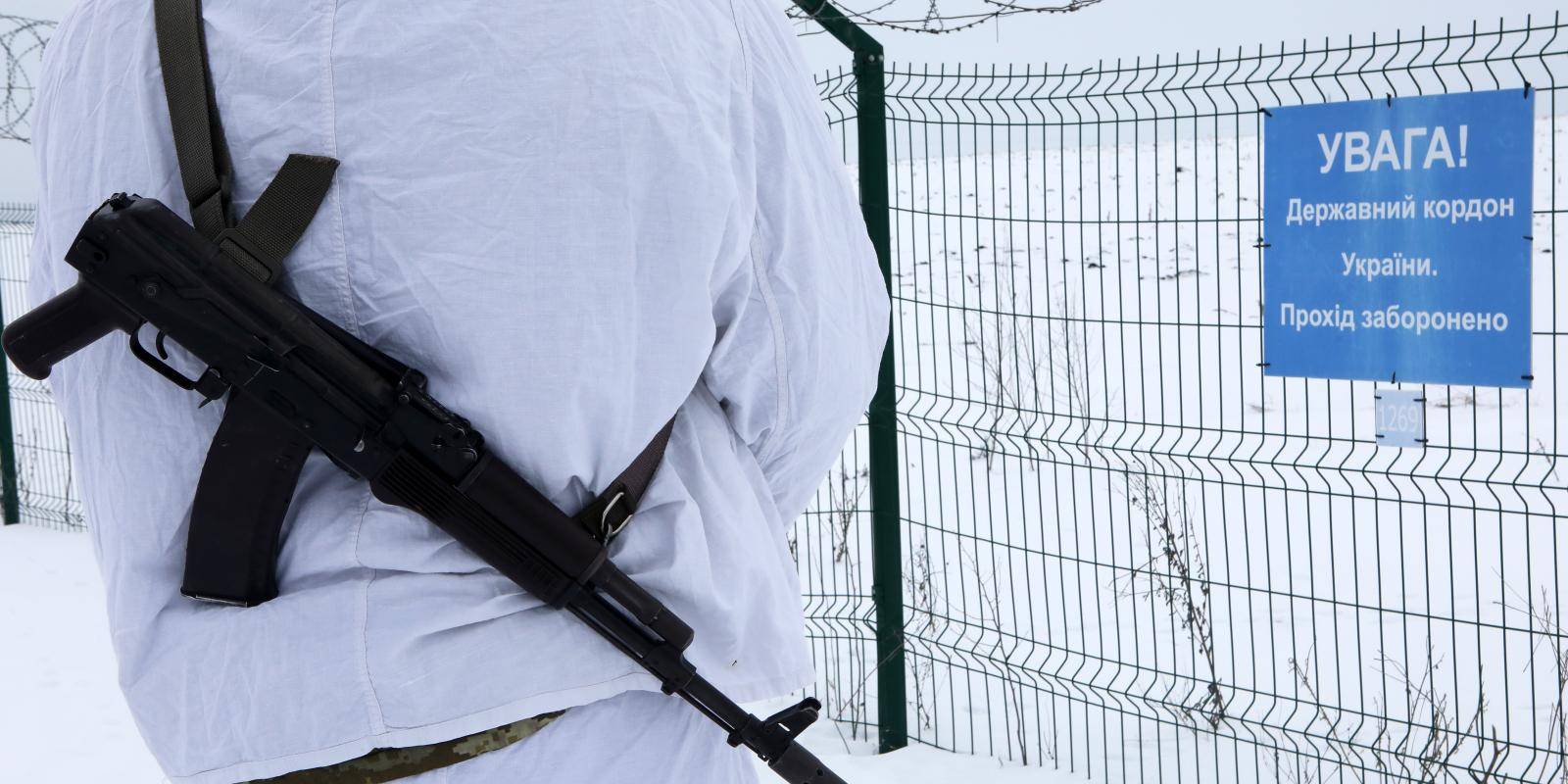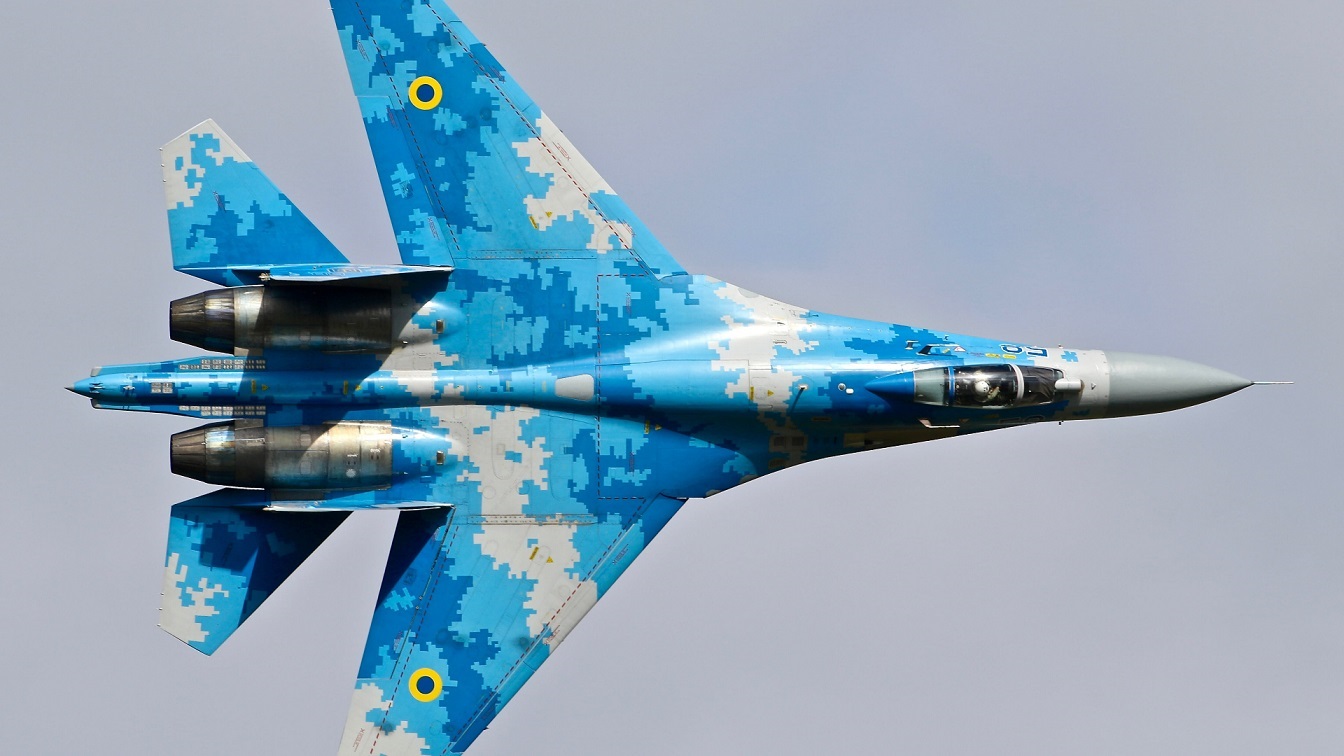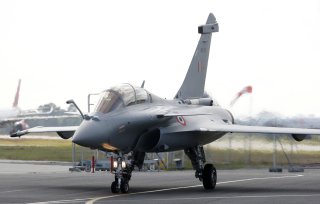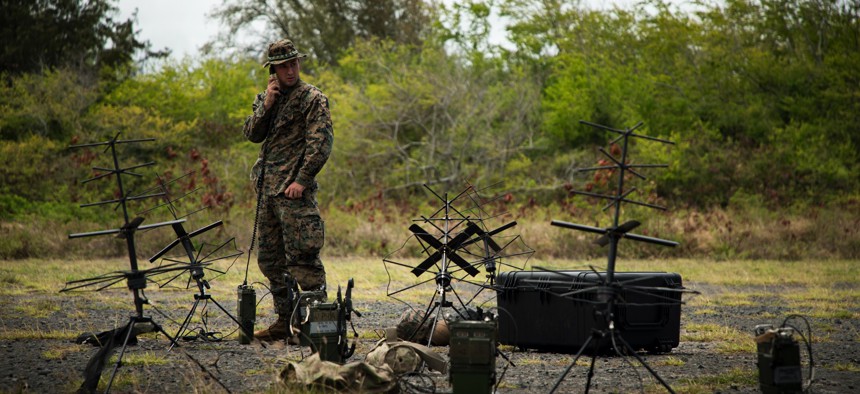Roni Yadlin
Since the day when Thespis made dramatic history and first took to the stage as a character in a play, the ancient Greeks used theatrical productions to provide social commentary, impart lessons, and inspire action. These publicly funded events helped the audience understand their history and role in society. The Greek use of drama imbued a tragic sensibility in the citizenry, warned them of dangers facing their community, reminded them of their responsibility to the collective and helped them develop national strategy.[1]
A key tool in these dramas was symbolic characterization in which the characters on stage represented moral concepts and imparted desired lessons. Greek drama was itself embodied in the masks representing Melpomene, the Muse of tragedy, and Thalia, the Muse of comedy. This concept of characterization also provides an allegorical framework through which to consider some of the critical characteristics and skills necessary for strategists. Strategists need to have the ability to reconcile and balance opposing tensions, as represented by Thalia and Melpomene, engage in both reflection of the past and anticipation of the future like the Roman God Janus, emulate the contemplation and discernment of Judeo-Christian cherubim, and seek the aims of the embodiment of Lady Justice.
Melopmene, Ny Carlsberg Glyptothek, Copenhagen (Wolfgang Sauber/Wikimedia)
Originating in ancient Greece, the smiling and crying faces of Thalia and Melpomene still symbolize drama today. These characters, embodying comedy and tragedy, represent opposites in life and the tensions between them. Although strategic decision-makers are concerned with issues extending far beyond drama, they must know how to balance the tensions they encounter.
Roman statue of Muse Thalia, Spanish Royal Collection (Ana Belén Cantero Paz/Wikimedia)
Intelligence, according to F. Scott Fitzgerald and quoted by John Lewis Gaddis, is “the ability to hold two opposed ideas in the mind at the same time, and still retain the ability to function.”[2] This concept of holding two ideas simultaneously, whether they are directly opposing or not, represents the need for strategic decision-makers to balance. Strategy is a complex process that comprises a number of elements in a world where chance, uncertainty and ambiguity are ever-present.[3] The complexity inherent in strategic challenges presents decision-makers with conflicting priorities and concerns. Strategic success requires the ability to maintain equilibrium between those competing imperatives.
There are many avenues through which strategists can develop the skills required to adequately balance tensions. Carl von Clausewitz argues military leaders can gain their requisite knowledge and skills through reflection, study, thought, and experience.[4] St. Augustine frames his teachings as checklists that provide recommendations, rather than prescriptions.[5] This kind of framework allows those who use it to react to changing circumstances and become comfortable with contradictions.
Strategic decision-makers must balance the tensions inherent in their own minds. They also need to resolve the structural tensions within the strategic decision-making landscape. Because strategy is the “alignment of potentially unlimited aspirations with necessarily limited capabilities,” strategists need to be able to balance competing goals and requirements.[6]
Determining priorities among the various aspirations and appropriately managing all the tools of national power is an exercise in balancing tensions.[7] Additional tensions arise from the opposing desires and motivations of individuals within the decision-making apparatus. Each participant in the decision-making structure, be they individual or a collective, has their own goals, objectives, and motivations.
Consequently, strategic decision-makers must balance these often-conflicting priorities to reach a single choice. These decisions will likely be the product of the pulling and hauling of political bargaining and not match the desire of any particular player.[8] President Barack Obama’s decision to intervene in Libya, albeit in a limited and restricted role, demonstrated one such instance of political decision-making. Differing recommendations, as well as potential political and financial costs, led to a compromise that did not entirely reflect the desires of any particular party, but it was ultimately a successful strategic intervention.[9] Because of the complexity inherent in strategic choices, the ability to balance both individual and group tensions, to include those that are in direct opposition to each other, is a critical requirement for strategic decision-makers.
Thalia and Melpomene are two different characters who represent opposing tensions. By contrast, the Roman god Janus is a single character with two faces, one looking forward and the other backward. Strategic decision-makers must similarly look both forward and back; they need the ability to appropriately reflect on the past and forecast the future. Strategists routinely look to historical analogy when confronted with difficult situations, but they often learn the wrong lessons and thus make bad decisions.[10]
A Roman coin depicting Janus (Britannica)
Analogies provide useful shortcuts, but they obscure aspects of the present that may differ from the past.[11] When considering American intervention in Vietnam, President Lyndon Johnson drew connections to the 1938 Munich negotiations and the Korean War to inform his decision-making. These events did not, however, accurately mirror the current situation and instead the French defeat at Dien Bien Phu may have been a more appropriate historical analogy.[12]
Hindsight can contaminate judgment and decision-making.[13] When looking backwards, decision-makers are prone to outcome bias and may judge past choices not on the quality of the decision but on the desirability of the outcome. This is evident in the belief that officials in the George W. Bush administration should have anticipated and prevented the attacks of September 1. Because of the emotional desire to have avoided the trauma of the attack, hindsight caused observers to point to intelligence reports prior to the event as overwhelming evidence of its impending occurrence.[14]
Strategic decision-makers need to temper the lessons they draw from history with an understanding of the pitfalls of analogizing. To do so, Yeun Foong Khong recommends using analogies whose lessons appear more ambiguous. This forces decision-makers to augment their answers elsewhere and seek several relevant past occurrences, rather than rely solely on a single historical instance.[15] Colin Gray suggests that historical analogies are useful to strategists so long as they approach their analysis of the past on different levels.[16] By considering the analogy at the tactical, operational, and strategic level, and garnering specific conclusions from each strata, decision-makers can avoid some of the traps of misapplying historical analogy.
In addition to historical analogies, strategists can use their own experiences to ground their strategies in lessons from the past. This can also be fraught with difficulty. Firsthand experiences often exercise too great an influence on a person’s predispositions. The impact a past event had on a decision-maker will influence the likelihood that they attempt to apply that event to their current situation. If, for example, the event was particularly traumatic or brought the individual significant attention, it will weigh heavier in their mind.[17] Firsthand experiences also contribute to the illusion of familiarity. Familiarity is confused with truth such that personal experiences bias expectations and lessons learned.[18]
French officer David Galula was successful in his counterinsurgency efforts in the Greater Kabylia district of Algeria. However, this success proved detrimental when he tried to apply the same tactics and strategy to the Bordj Menaiel sector.[19] His previous successes blinded him, and this made him unable to recognize differences between the two regions and fail to see how those differences would impact the utility and effectiveness of the strategy.
Despite the risks inherent in learning from experience, there are still significant benefits to using the past to make strategic decisions. J.F.C Fuller argues that all knowledge is derived from experience and that knowledge can drive a decision through observation and reflection. Without experience, strategists cannot develop the reason required to make decisions and formulate strategy.[20] Emile Simpson defines strategy as a dialogue between theory and experience. Simpson asserts that effective strategy requires balance between those factors.[21] Examining the past through historical analogy and personal experience provides strategists context to apply to and frame their decision-making.
In addition to appropriately interpreting the past, strategists must also make reasonable and useful predictions about the future. There are pitfalls in this endeavor as well, some of which are related to the difficulties of understanding the past. Because it is easy to construct plausible narratives about what has previously happened, individuals develop the illusion that they understand the past. This gives them overconfidence in their ability to predict the future.[22]
In addition to heuristic biases, strategists must grapple with the presence of chance and uncertainty when making their predictions about the future. Clausewitz considers uncertainty and chance two of the elements that make up the climate of war and includes chances in his trinity. Because of the presence of uncertainty and chance, guesswork and luck become a significant part of war and strategy.[23] Additionally, the presence of chance precludes strategists from controlling circumstances enough to ensure they can achieve their desired effects.[24]
The German parachute assault on the Maleme airfield on Crete suffered from several setbacks related to chance. First, excessive dust from the propellers of the aircraft prior to takeoff disrupted the planned spacing of the aircraft and drops. Additionally, the tow-rope of the glider flown by the operational commander General Wilhem Sussmann snapped, and he crashed to his death. Finally, the Germans had little control over their parachutes and thus many of them landed in water, drowning nearly immediately. Chance so completely impacted the effectiveness of the parachute assault that Adolf Hitler refused to approve another parachute operation for the remainder of the war.[25]
Despite the inherent difficulties, strategy nonetheless requires prediction. Decision-makers can employ several tools and frameworks to make reasonable and useful predictions. Khong recommends mitigating the dangers by subjecting predictions to a test.[26] One such test might be a “premortem” wherein decision-makers conduct a thought experiment arguing that their forecasts and plans have failed. Attempting to trace the reasons for the failure can provide decision-makers a check on their prescriptions and inspire improvements.[27] Another predictive framework involves using strategic foresight to imagine multiple futures. In this type of planning, which Herman Kahn used to contemplate nuclear strategy, decision-makers imagine a set of plausible futures and then build strategies that could be useful across a range of those futures.[28]
Having several frameworks for prediction can help provide better projections that may be more resilient to the inevitable uncertainty and chance. These projections then inform policy decisions that, when accurate, can bring strategic success. China’s Premier Deng Xiaoping chose to invade Vietnam in part because he predicted the Soviet Union would refrain from attacking China in response. Deng anticipated that moving troops away from other theaters would go against Moscow’s strategic interests and thus the Soviet Union would not pose a risk to Chinese action. This accurate forecast informed Deng’s decision-making and allowed Beijing to achieve its strategic objectives.[29]
While some strategies have a specific timeframe with which to bookend a prediction, when it comes to national objectives, strategy never ends. Everett Dolman characterizes strategy as a plan for attaining a continuing advantage and considers it an unending process seeking continuation rather than culmination.[30] This means that strategists’ foresight must have an infinite horizon. However, because of uncertainty, the future is unlikely to play out as predicted.
Therefore, strategists need to implement feedback into their strategic processes to continually adjust their plans as reality diverges from their prediction. Despite the difficulty and risk inherent in both historical analogy and future predictions, strategic decision-makers must embody Janus’s ability to look backwards and forwards to appropriately apply historical analogy and experience to their predictions for the future. This dual perspective will help them make better informed strategic decisions.
Engraved illustration of the "chariot vision" of the Biblical book of Ezekiel. (Matthäus Merian/Wikimedia)
While Janus has two faces on a single head, the Judeo-Christian cherubim, heavenly creatures described in the book of Ezekiel, each have four heads.[31] These creatures represent the highest levels of contemplation and discernment, two related attributes that are also critical to strategic decision-makers.[32] Contemplation, or considering something deeply and thoughtfully, is necessary when grappling with the difficult challenges that strategists face.
Competing priorities, limited resources and the presence of uncertainty combine to create difficult strategic problems that require contemplation. Because contemplation is a cognitive act, it is subject to cognitive biases like the tendency to address difficult questions by oversimplifying them and answering a related, but easier, question.[33] Throughout the war in Vietnam, the United States military failed to make meaningful progress towards their objectives. Rather than reevaluate their strategy and consider what changes might be necessary to achieve their political aims, the military instead focused on easy metrics of body counts, missions flown, and bombs dropped.[34] The inclination to simplify is understandable because the world is complex and strategic decision-making is difficult. However, these cognitive shortcuts sacrifice methodological rigor; strategic decision-makers cannot afford to take shortcuts and instead need to engage in contemplative thinking to address the challenging questions they face.
Like contemplation, strategic decision-makers need discernment, or the ability to judge well, to reconcile the attainment of possibly unlimited ends with necessarily limited means.[35] Strategists must know how to appropriately limit the desired objectives and how to properly allocate the available capabilities. Knowing the difference between respecting constraints and denying their existence is fundamental in strategy; successful strategy rests on that ability.
President Abraham Lincoln held his objective of maintaining the Union constant, but was able to recognize shifts in his available means. Lincoln chose to curtail certain civil liberties and Constitutional protections but was not willing to suspend the Presidential election. He kept his options within the appropriate physical, emotional and moral tolerances of the time and was able to recognize and adapt as those tolerances changed.[36] In contrast, President Woodrow Wilson was unable to reconcile his means and his ends following the First World War. The goals of his Fourteen Points far exceeded the abilities of American foreign policy officials tasked with negotiating its implementation.[37] Wilson lacked the cherubim’s skill of discernment required to align his objectives and capabilities and thus achieve his strategic goals.
While the cherubim’s multiple heads allow for the wide ranging vision necessary for contemplation and discernment, strategic decision-makers must also seek the aims of a character usually depicted as blind: Lady Justice. John Lewis Gaddis argues justice should be a goal for strategic decision-makers, defining history as a search for justice through order.[38] Strategists must aim for justice both in the ends they seek and the means by which they seek them.
Statue of Lady Justice in Frankfurt, Germany (Pablo Pola Damonte/Flikr)
The just war theory of jus ad bellum is not only relevant in the direct lead-up to armed conflict. It is also pertinent long before, and independent of, the use of force. As such, jus ad bellum should guide strategists as they make decisions in times of peace.[39] Strategy should seek the common good, which loosely equates to a combination of peace, justice, and order. Other aspects of proper strategy include human life, physical security, honor, dignity, and material, moral, economic and spiritual well-being.[40] Strategists should seek to achieve these elements alongside their political objectives. B.H. Liddell Hart argues the objective of war should be a better state of peace and that strategists should consider their desired state of peace as they conduct war.[41] These ideas should drive and guide decision-makers, particularly as they consider foreign policy interactions.
Lady Justice carries a set of scales with which she balances evidence in order to render judgment and make decisions. While strategists do not necessarily balance evidence, they do need to consider a wide range of other factors when making strategy. As previously discussed, they must balance priorities, resources, and tools to achieve their aims. Additionally, strategic decision-makers often have to balance short term goals with their ultimate long-term objective, driving the choice between action and prudence. Lincoln made such a strategic choice in the timing of the Emancipation Proclamation. Lincoln delayed the decision by understanding that many of the slave-holding Union states might defect if he freed the enslaved population too early in the war.[42] This choice required him to balance justice and expediency. He understood, as Clausewitz argued, that individual aspects of war, and by extension strategy, cannot be considered in isolation from their overall purpose. Lincoln did not allow his quest for justice in freeing the slaves to impact his overall objective of preserving the Union.[43]
As Lady Justice balances the evidence in front of her to render judgment and make decisions, she wears a blindfold. This lack of sight represents her impartiality and ability to consider evidence without regard to the status or power of either side. Strategic decision-makers must similarly be able to impartially approach their strategic challenges and put aside personal biases. Individual policymakers and political operatives are likely to have their own personal and group preferences based on the organization they are a member of, the position they hold within that organization, and their own personal views. Graham Allison and Philip Zelikow argue that individuals involved in decision-making will usually make recommendations that reflect his or her own preferences.[44] The final decision-maker needs to consider all the preferences of these individuals but, like Lady Justice, should do so impartially and without bias or preferential treatment.
In addition to the scales, Lady Justice carries a sword, underscoring the fact that retribution may be a part of achieving justice when she finds someone guilty. This desire to seek justice impelled the Obama administration to intervene in Libya and protect the values of human rights, the rule of law, and constitutional government.[45] Proponents of intervention understood that allowing Muammar Qaddafi to continue killing Libyan civilians would amount to a failure to uphold the international community’s moral responsibility to protect innocents.[46] Strategic decision-makers must compare the costs of going to war with the harm of failing to intervene and make decisions guided by justice and the common good.
Gaddis recommends, "if you turn your ideas into animals, they’ll achieve immortality.”[47] The attributes and abilities of a strategic decision-maker lend themselves well to such characterization, not as animals, but as part of three particular mythical embodiments. First, the Greek Muses Melpomene and Thalia, representing the opposites of tragedy and comedy, remind strategic decision-makers of the importance of appropriately balancing tensions. Second, the two faces of the Roman God Janus represent the strategic decision-makers’ requirement to properly draw lessons from the past and make forecasts regarding the future. Those historical analogies and future predictions can drive better informed decisions. Contemplation and discernment, attributes of the many headed cherubim, are critical to strategic decision-makers. They must be able to recognize cognitive biases and use tools and frameworks to judge well and avoid the downfalls of those biases. Finally, strategic decision-makers should seek to uphold the attributes of Lady Justice by impartially balancing evidence and taking action to ensure the achievement of justice. Strategic decision-makers must embody these characters, embrace their attributes, and utilize their abilities to build a successful strategy.



:quality(100):focal(3820x1530:3830x1540)/cloudfront-us-east-1.images.arcpublishing.com/thesummit/MAYRWKSTDJHVFKXS27FYOJTMVU.jpg)

